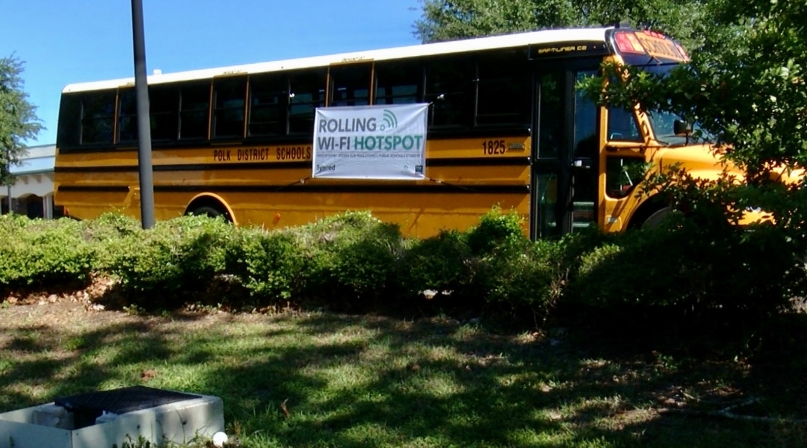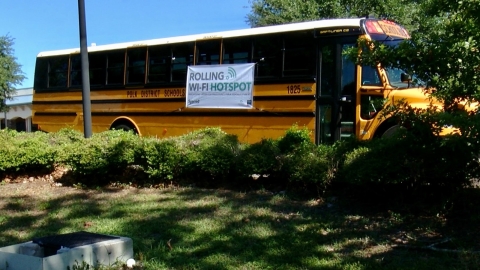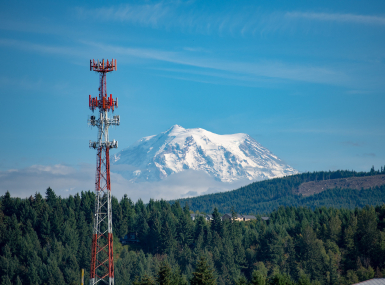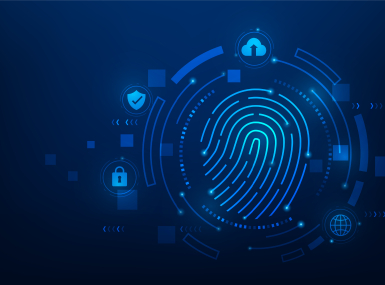Broadband demands during COVID-19 reveal disparities
Author
Upcoming Events
Related News

Key Takeaways
As the COVID-19 situation brings increased demands in teleworking, virtual learning and even telemedicine, counties are turning to public hotspots to meet the needs of residents.
In rural Pope County, Minn., Commissioner Paul Gerde said high speed internet needed for downloads and uploads is a challenge. With hills and trees part of the county’s landscape, wireless internet does not work well in the area.
With Minnesota under a stay-at-home order, the disparities in broadband have become even more apparent.
“We have to be diligent and tell our legislators it’s important to us,” Gerde said. “Just because our area doesn’t have very good service, we shouldn’t be left out.”
Gerde, who serves on the county’s broadband committee, said the county is making efforts to get high speed internet through state grants.
“In rural Minnesota with this telemedicine and kids learning from home, it’s very important,” he said.
Gerde said one of his constituents told him she brings her kids more than 15 miles each day to do homework in the parking lot of a school because she is unable to get internet service at home.
“You shouldn’t have to bring your kids 15 miles to get their homework done,” he said. “This day and age, we should be able to have similar service.”
Across the country, many school districts have converted school buses into mobile hotspots that can drive to underserved areas of a county to provide internet access for students.
School buses from Caldwell County, N.C. to Polk County, Fla. are being outfitted to serve as “rolling hotspots,” specifically to meet the needs of students who are trying to complete assignments and communicate with teachers.
In Pierce County, Wash., Pierce Transit launched a pilot program in partnership with Pierce County Emergency Management and local school districts to provide free mobile Wi-Fi hot spots for students via transit buses.
With schools in Washington closed for the remainder of the year, students can park near the buses, where the Wi-Fi extends 100 feet, to get their work done. The buses have been parking at two locations in the county.
Sonoma County, Calif.’s Office of Education is working with schools to help connect students to the internet, specifically in rural areas of the county where the lack of broadband has been a long-term issue.
Cody Grosskopf, director of Information Technology at the Sonoma County Office of Education, said schools are trying to provide hotspots for those without internet access at home, but the COVID-19 situation has put hotspots in high demand, and many are on backorder.
“I’m not sure long-term what’s going to happen basically in terms of access,” he said.
Beyond meeting the needs of students, counties are using county-owned facilities as well as public spaces to provide free internet access for all residents.
In New Castle County, Del., county residents can use free, drive-thru Wi-Fi hotspots, which were available prior to the COVID-19 outbreak. County Executive Matt Meyer recently announced that an additional 12 hotspots would be made available, making a total of 22 located throughout the county.
The hotspots are made available in partnership with Delaware Division of Libraries, University of Delaware, Verizon, Assurance Media, Cisco-Meraki and the New Castle County Information Systems and Public Works departments.
To use the hotspots, county residents must remain in their cars and practice social distancing. The hotspots are available during the library’s operational hours. A GIS map allows residents to view locations where they can access the hotspots.
Similarly, in Baltimore County, Md., County Executive John Olszewski announced exterior Wi-Fi resources at Baltimore County Public Library branches.
A GIS map is also available and shows the Wi-Fi locations for county residents to find the closest available access point.
“This crisis has upended life in countless ways, and it requires us to find creative solutions to the challenges we face,” Olszewski said. “We hope these new Wi-Fi resources will help narrow the access gap as we continue to work around the clock to identify additional resources to support Baltimore County families during these trying times.”
Prior to the COVID-19 outbreak, Goochland County, Va. installed hotspots at county-operated facilities. Administrative Services Manager Paul Drumwright said the hotspots are now being used during the COVID-19 pandemic and serve as internet access points for those who live in rural areas.
Additionally, he said the school buildings in the county are all offering Wi-Fi in their parking lots as well as the county’s library and local YMCA.
“We did that just to make sure we could give more options to our citizens so that hopefully people won’t be crowding to the existing locations and make sure to keep social distance even if they’re in their vehicles,” he said.
Drumwright said the state has reached out to localities and put together a statewide GIS map highlighting hotspot locations available to residents.
“Going through this has made it even more clear for us how this is something that some of our citizens are at a disadvantage because of the lack of broadband at their location,” Drumwright said. “That’s given us just more reason to keep pushing on our broadband initiatives to extend service.”
The Federal Communication Commission (FCC) is holding a Rural Digital Opportunity Fund Auction and directing up to $20.4 billion over 10 years for broadband networks in unserved areas. The commission is hosting a webinar free to the public on Wednesday, May 20 at 2 p.m.

Attachments
Related News

House committee passes local broadband permitting preemption bills
The American Broadband Deployment Act of 2025 would enact new restrictions on a variety of state and local land use and zoning authorities pertaining to the deployment of telecommunications infrastructure.


